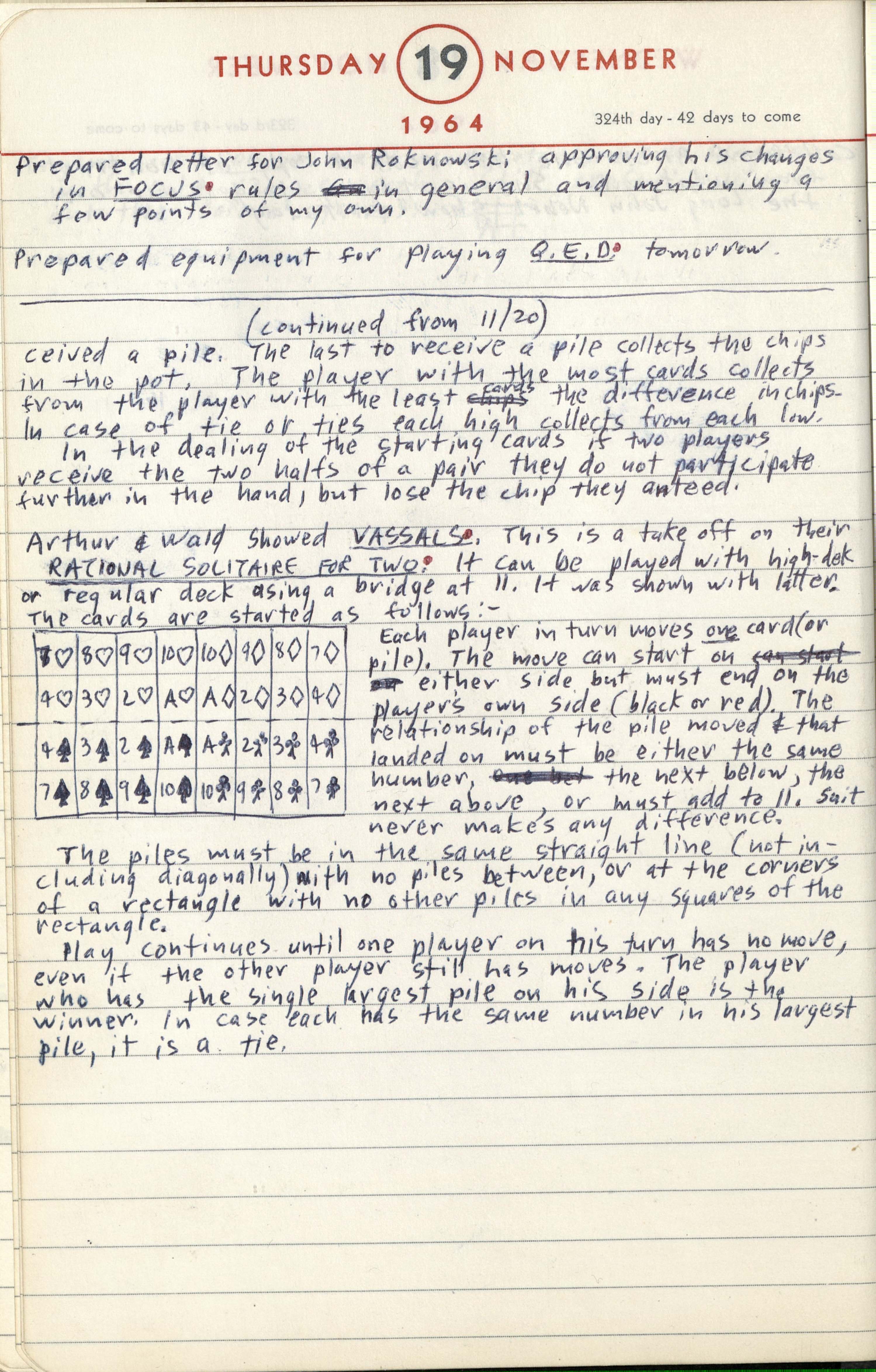1964_Sackson_344_November 19.jpg: Page #1
Original title: 1964_Sackson_344_November 19.jpg

Transcription
Thursday 19 November 1964 324th day - 42 days to come
Prepared letter for John Roknowski approving his changes
in FOCUS rules an [crossed out] in general and mentioning a
few points of my own.
Prepared equipment for playing Q.E.D. tomorrow.
(continued from 11/20)
ceived a pile. The last to receive a pile collects the chips
in the pot. The player with the most cards collects
from the player with the least chips [crossed out] cards the difference in chips.
In case of tie or ties each high collects from each low.
In the dealing of the starting cards if two players
receive the two halfs of a pair they do not participate
further in the hand, but lose the chip they anteed.
Arthur & Waldshowed VASSALS. This is a take off on their RATIONAL SOLITAIRE FOR TWO. It can be played with high-dek or regular deck using a bridge at 11. It was shown with latter. The cards are started as follows: -
[Drawing of cards laid out as follows:
- Row 1: 7 hearts | 8 hearts| 9 hearts | 10 hearts | 10 diamonds | 9 diamonds | 8 diamonds | 7 diamonds
- Row 2: 4 hearts | 3 hearts | 2 hearts | ace hearts | ace diamonds | 2 diamonds | 3 diamonds | 4 diamonds
- dotted line
- Row 3: 4 spades | 3 spades | 2 spades | ace spades | ace clubs | 2 clubs | 3 clubs | 4 clubs
- Row 4: 7 spades | 8 spades | 9 spades | 10 spades | 10 clubs | 9 clubs | 8 clubs | 7 clubs]
Each player in turn moves one card (or
pile). The move can start on can start
on [crossed out] either side but must end on the
player's own side (black or red). The
relationship of the pile moved & that
landed on must be either the same
number, one bet [crossed out] the next below, the
next above, or must add to 11. Suit
never makes any difference.
The piles must be in the same straight line (not in-
cluding diagonally) with no piles between, or at the corners
of a rectangle with no other piles in any squares of the rectangle.
Play continues until one player on his turn has no move,
even if the other player still has moves. The player
who has the single largest pile on his side is the
winner. In case each has the same number in his largest
pile, it is a tie.